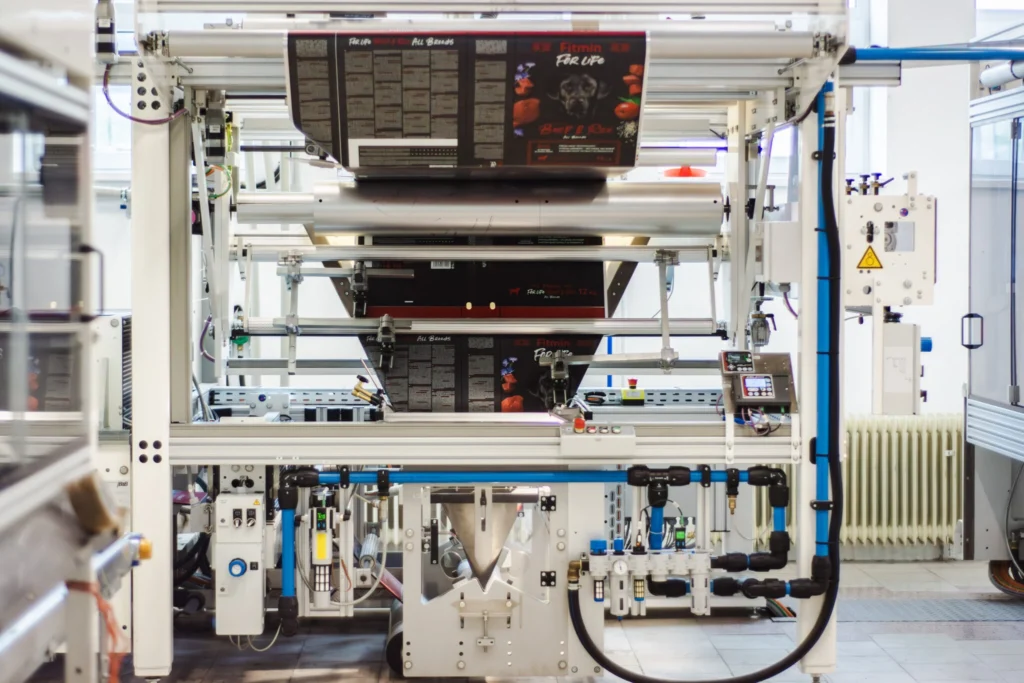GRANITOL has gone through several production periods during its long history. From the production of faux suede leather, roller blinds, floor coverings, leatherette, welded haberdashery through the production of hoses and vacuum cleaner tubes to the production of laminated products (PVC on paper and textiles).
Since the 1960s, when the first blowing line was acquired, GRANITOL gradually began to focus on the production of PE films in order to gradually become a leader in this segment on the domestic market and a major player on the European market. Thanks to the focus on innovation and technological development, the experience gained and the emphasis placed on quality, GRANITOL is today the largest producer of PE films in the Czech Republic.
GRANITOL has been manufacturing blown PE films for more than 50 years. Many years of research and product development have brought a number of well-known brands with a guarantee of quality, such as MIKROTEN®, GRANOTEN®, FLEXOTEN®, SEPATEN®, PERFOTEN® and HYGITEN®, to the attention of the professional and general public. The brand name MIKROTEN® has become a generic name for HDPE films.
The company’s priority is continuous development and improvement. Every year, considerable resources are invested in more modern and efficient machinery. The willingness to meet customer requirements is backed up by tests carried out in our own laboratory, equipped with testing and inspection equipment. Measurements are carried out in the laboratory as part of the inter-operational and output quality control of products.
The company’s product range represents thousands of items of single and multi-layer films based on all types of PE and final PE film products (bags, pouches, cuttings). A significant part of the films is printed with up to 10 colours according to customers’ graphic specifications. On customers’ request, the product range is continuously expanded with new sizes, products with specific properties, additivation and colouring, surface treatments and printing variants.
ldpe films
LDPE (low density polyethylene) is produced under high pressure and has a branched structure. At GRANITOL, LDPE film is produced by blown film technology from pure LDPE or blends with additives. This technology enables the production of films with shrinkage properties tailored to the customer’s requirements – from highly shrinkable to nearly shrink-free. LDPE is also often used for the production of multilayer (coextruded) films.
LDPE films are the most widely used type of plastic film, although they are often incorrectly referred to as “plastic” – the latter originally referred to PVC film. GRANITOL has been manufacturing LDPE films since 1967 under the registered brand name GRANOTEN®.
Thanks to their flexibility, strength and durability, LDPE films are suitable for packaging various types of goods, group and transport packaging, overlaying products and as a semi-finished product for further processing (e.g. welding).
The films are recyclable and marked with the recycling symbol 04.
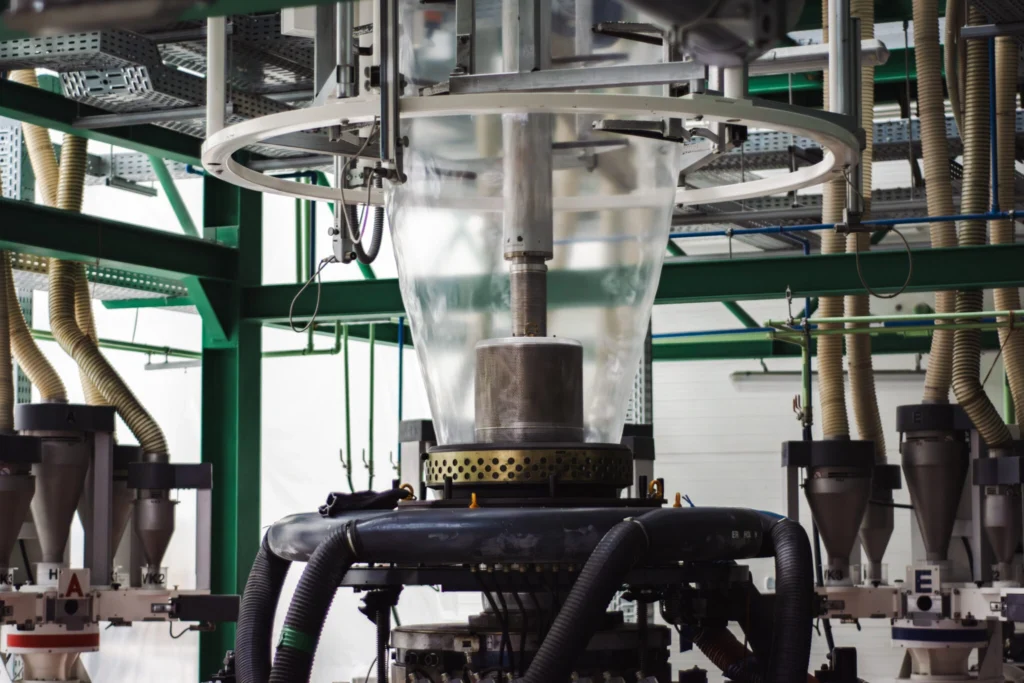
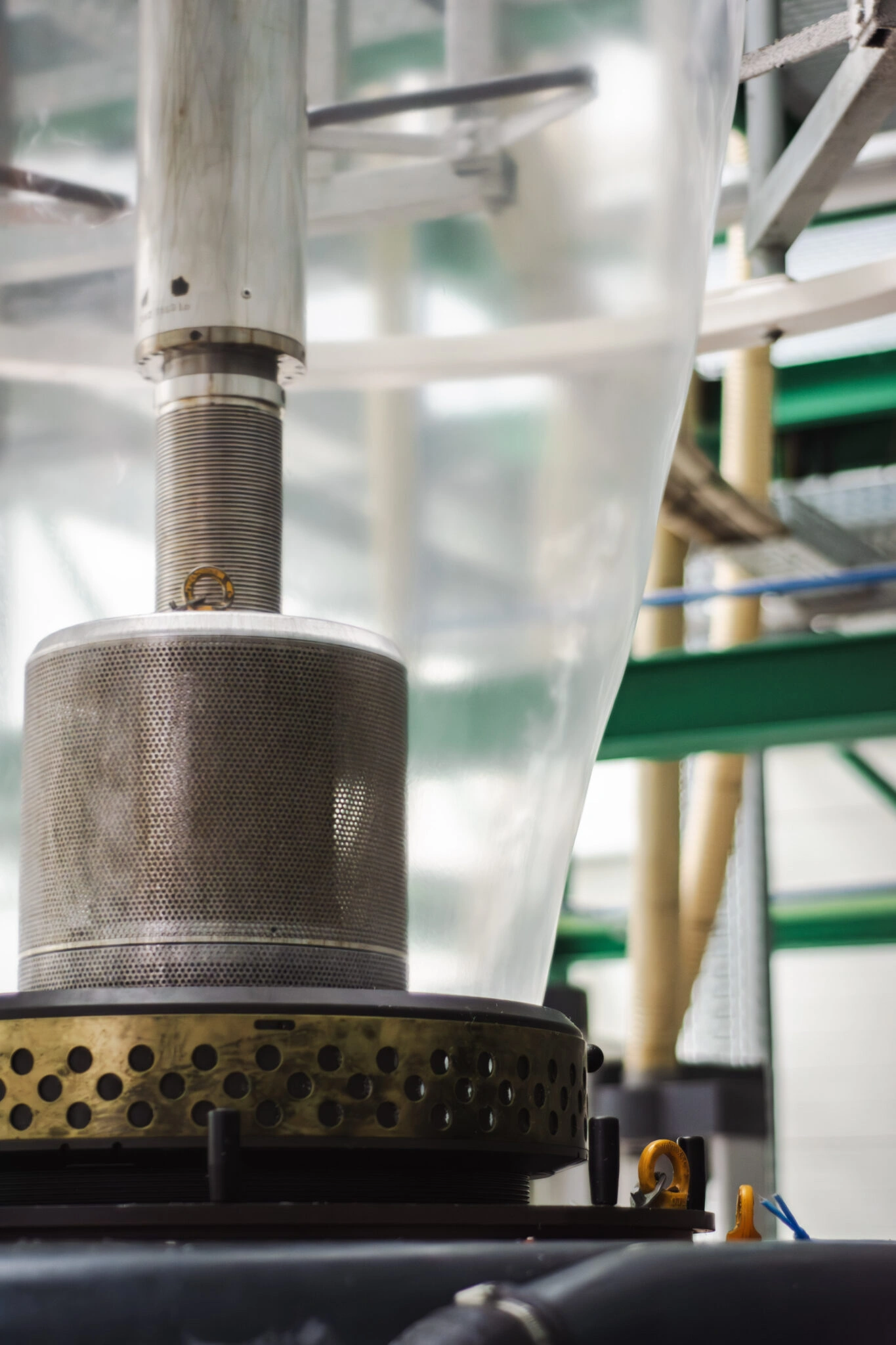
Product Specifications
Features
LDPE films are clear, tasteless and odorless. By adding colour concentrates, different colours can be achieved and additives can be used to produce films with the desired properties. The heat resistance of LDPE films is -50 °C to +85 °C. Under normal conditions of use, LDPE films are resistant to most chemicals, exhibit minimal wetting and good electrical insulation properties.
Clear LDPE films are suitable for direct contact with foodstuffs, in coloured versions only when the pigment content is up to the concentration specified by the manufacturer. LDPE films are ecologically benign, recyclable, landfillable or disposed of by incineration, which does not produce environmentally harmful substances.
Application
-
heat shrinkable films for group packaging of goods
-
packaging of magazines, advertising printed matter
-
films for personal hygiene
-
films for the construction industry (palletising films and stretch hoods)
-
waterproofing films for construction
-
production of adhesive films for surface protection
-
manufacture of tarpaulins for various applications
-
semi-finished products for the production of bags, shirt bags and cuttings
-
semi-finished product for printing
finishing options
-
flexo printing up to 10 colours
-
ionisation (surface treatment required before printing)
-
perforation
-
punching
-
UV stabilisation (film treatment to prevent UV degradation of the material)
-
antistatic treatment (prevents the film from being “charged” by static electricity)
-
anti-block treatment (prevents blocking – sticking of the film)
-
reduction of flammability by the addition of a flame retardant or extinguishing agent (an additive that reduces the flammability of polymers)
HDPE FILMS
High density polyethylene, known mainly under the abbreviation HDPE (or PE-HD), can be translated into English as high density polyethylene. It is produced at low pressures and its chains are linear. HDPE film is produced in GRANITOL by blown film technology.
HDPE was discovered in the 1950s and its mass use began in the 1970s. At that time, GRANITOL Moravský Beroun was the only company in Czechoslovakia to produce HDPE films under the brand name MIKROTEN® (production since 1976). This helped consumers to get used to calling HDPE films microtene.
The term microtene has thus become a generally accepted synonym for HDPE films.
HDPE films are used for the packaging of a wide range of products, for the production of cooking bags, for the manufacture of insulating boards and as a semi-finished product for the production of welded products.
HDPE films are marked with the recycling symbol 02.
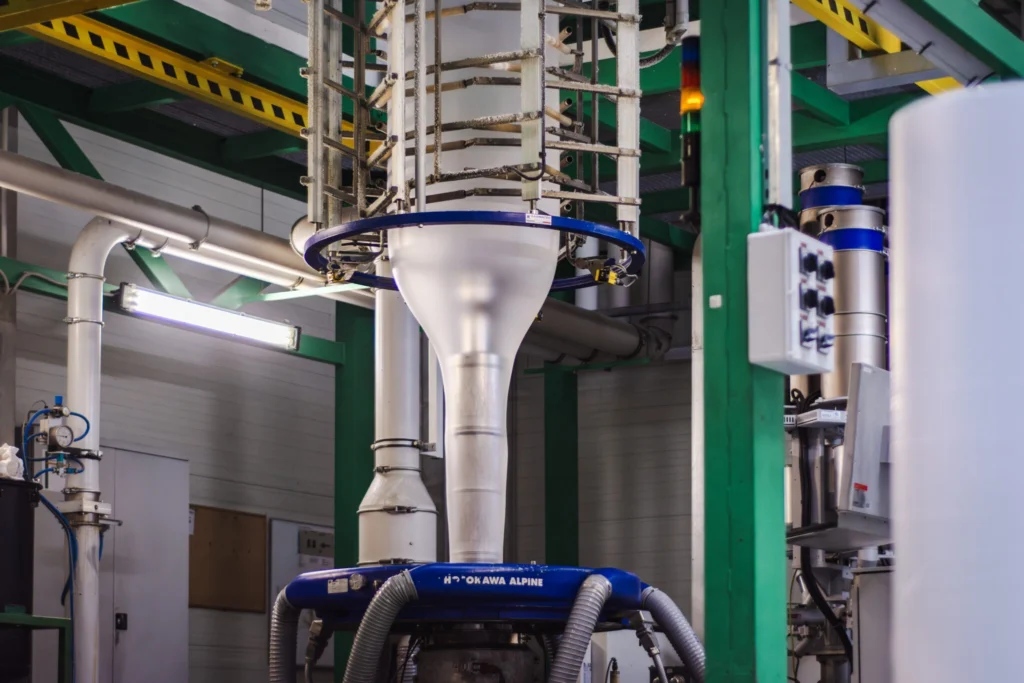
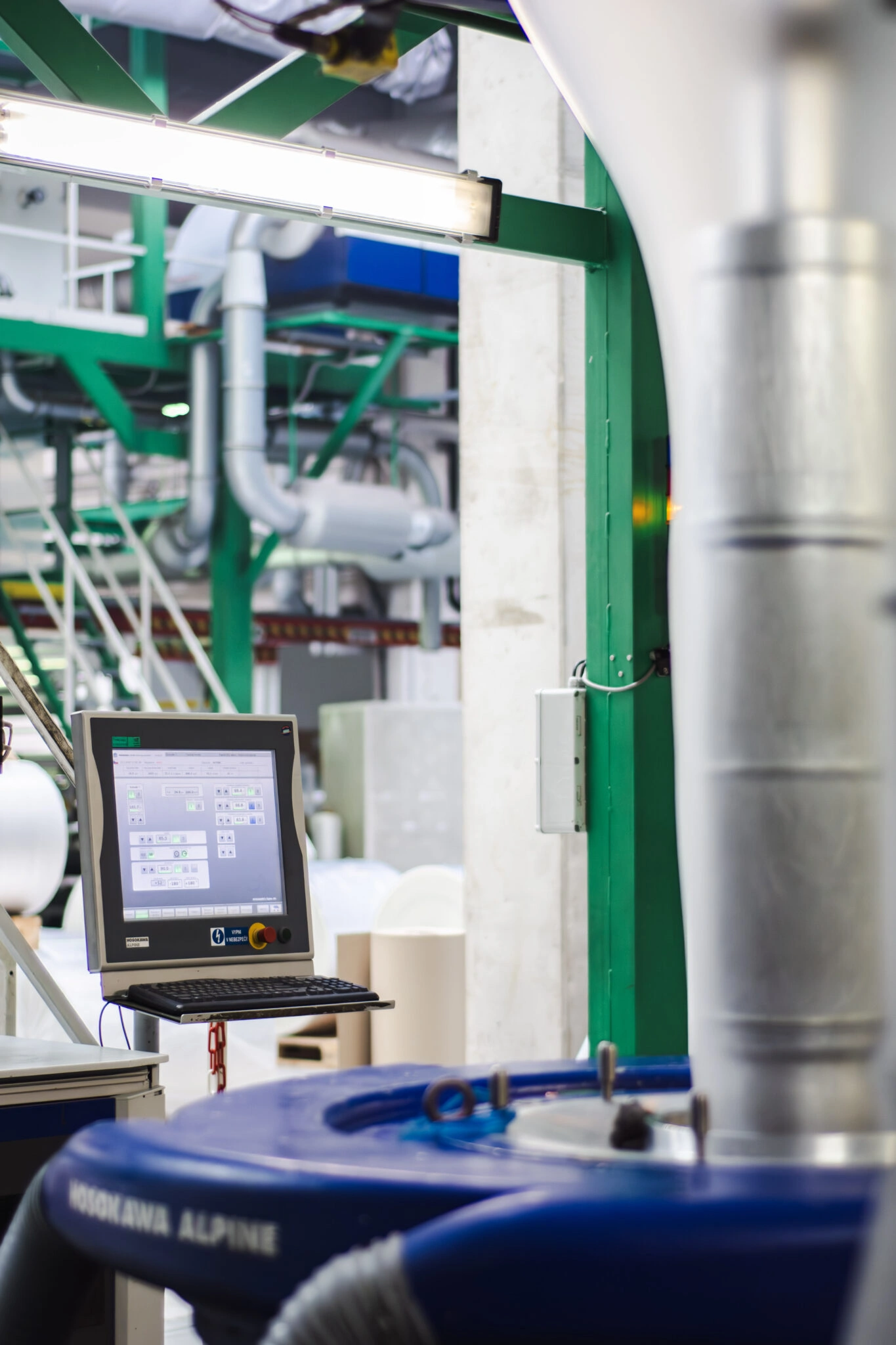
Product Specifications
Features
HDPE films are rustic, milky, odorless and have a duller texture than LDPE films. They are stronger, more opaque, shrink-proof and heat resistant from -50 °C to +110 °C. By adding colour concentrates and additives, the colour and properties of the film can be modified. They are resistant to most chemicals, do not corrode packaged goods, can be welded, and release a minimum of water vapour, odours, grease and aromatic substances. Due to their structure they have high chemical resistance.
In their natural form they are suitable for direct contact with foodstuffs, in the coloured version only if the pigment limit is observed. HDPE films are environmentally friendly, recyclable, incinerable without harmful emissions.
Application
-
packaging of a wide range of products
-
inner liners of paper bags
-
separation layer for asphalt cartons
-
film for the production of cooking bags
-
semi-finished products for the production of bags, shirt bags and cuttings
-
semi-finished product for printing
Finishing options
-
flexo printing up to 10 colours
-
Ionisation (surface treatment required before printing)
-
perforation
-
punching
-
design
-
permanent antistatic (permanent reduction of electrostatic charge on the film)
-
antiscratch treatment (protection of packaged goods from scratches)
-
antistatic treatment (prevents static electricity from “charging” the film)
printing of films
We print our foils using the flexographic printing method in two ways – in-line and off-line. Flexo printing is printing “from above”, where the ink is transferred from the plate to the material by pressure.
In-line printing takes place directly during the production of the film and is suitable for simpler, maximum three-colour motifs with a lower demand for accuracy.
For high-quality and accurate printing, we use off-line technology on separate machines with speeds of up to 400 m/min. This enables faithful reproduction of the graphics and high printing accuracy.
All our printing machines are connected to a waste air incinerator that environmentally disposes of the fumes from the alcohol inks.
We carry out the technical preparation of the print on the basis of documents supplied by the customer or we offer the possibility of using a complete printing service in the print studio.
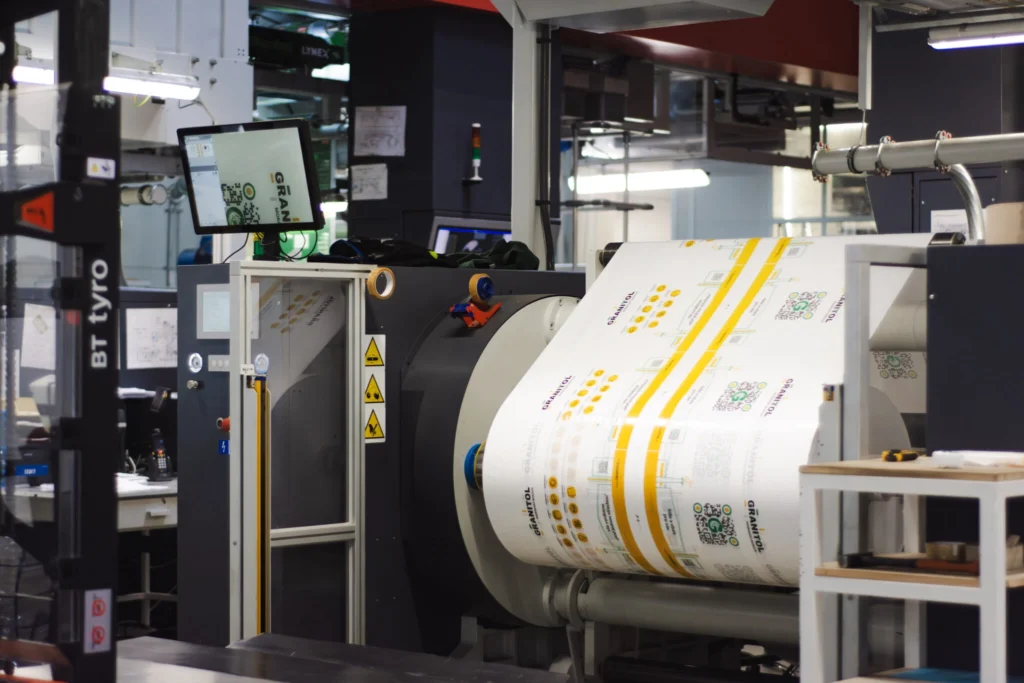
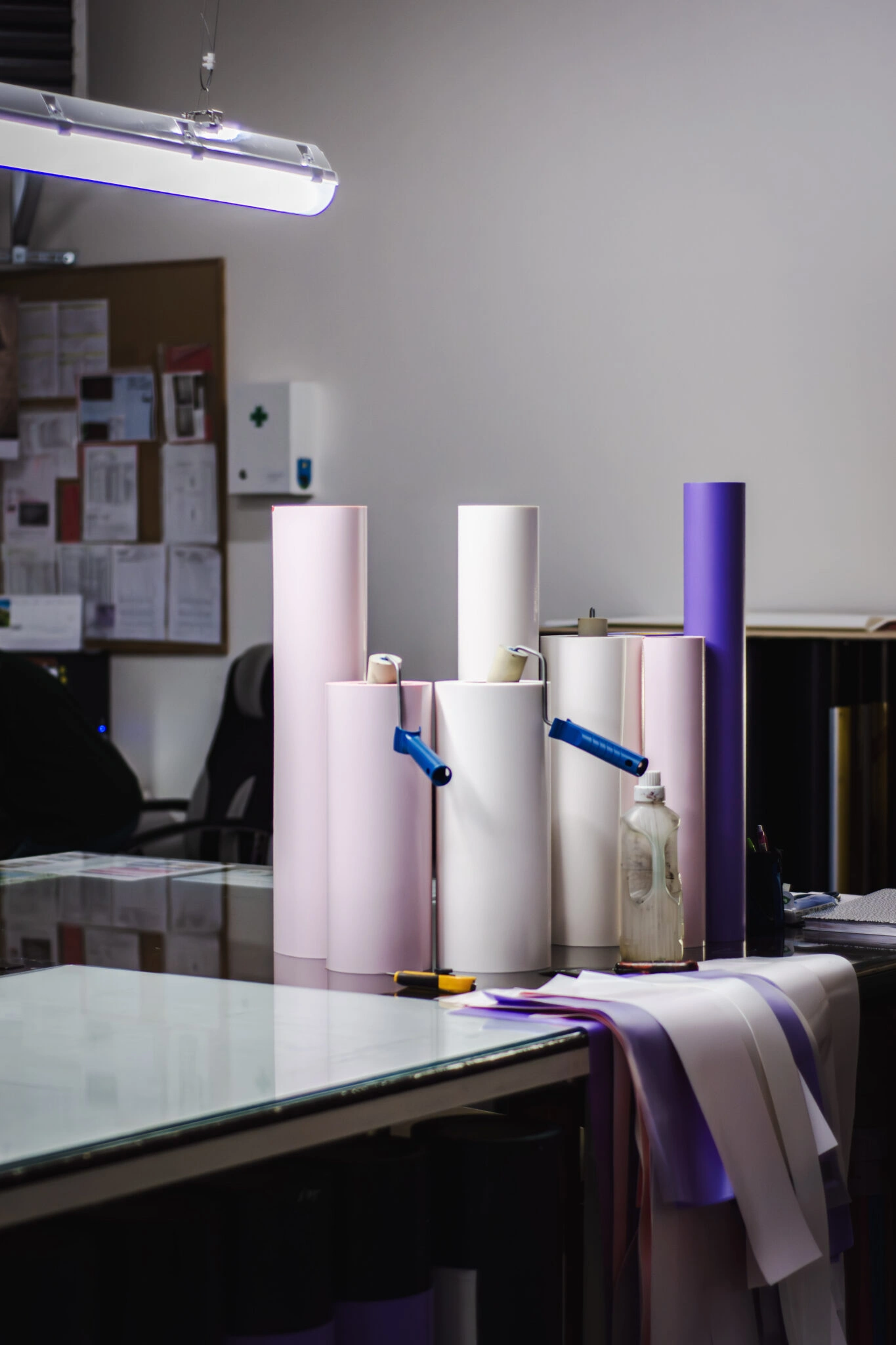
Basic types of printing performed in granitol
1. OFF-LINE PRINTING
1. PRINTING – it is a flat printing, maximum 10 colours, each colour is printed separately.
2. AUTOTYPE – this is a printing of 4 CMYK process colours (yellow, red, blue and black), where printing raster dots “into each other” creates a multi-colour print. This technology enables demanding prints including the transfer of colour photography.
3. COMBINED – it is a combination of autotype and feather printing.
Printed materials
-
LDPE film
-
HDPE films
-
multilayer films
-
PP films
-
hoses, half hoses, foils (one side)
use
-
foil printing for group packing
-
printing of packaging films
-
printing of films for the production of bags, shirts, pouches, etc.
number of colours
-
max. 10 colours
-
double-sided (in two operations)
2. IN-LINE PRINTING
This is a type of “featherbed” printing. Printing is part of the foil production line. This technology can be used to make simple maximum three-colour prints, not demanding on the precision of printing.
Printed materials
-
LDPE films
-
HDPE films
-
multilayer films
-
tubing (double-sided), half tubing (double-sided), foil (single-sided)
Application
-
printing of palletising films and stretch hoods
-
printing of films for the construction industry
-
printing of technical and packaging films
-
printing of recycling signs, pictograms, etc.
number of colours
-
max. 3 colours
-
double-sided (3+3 colours)
LAMINATED films
LAMITEN® are multi-layer films for demanding packaging applications that place emphasis on appearance, protection and durability. They combine layers of PE, PET, BOPP, CPP or paper, and allow precisely defined barrier and mechanical properties.
The films are produced as duplex or triplex, in widths of 300-1200 mm and thicknesses from 40 to 180 microns. Printing in up to 10 colours, the option of matt or non-slip surfaces and the variability of combinations open up a wide range of applications – from food to technical products.
LAMITEN® are suitable for direct contact with food and in single-species variants are also an environmentally friendly solution for sustainable packaging design.
Product page here.
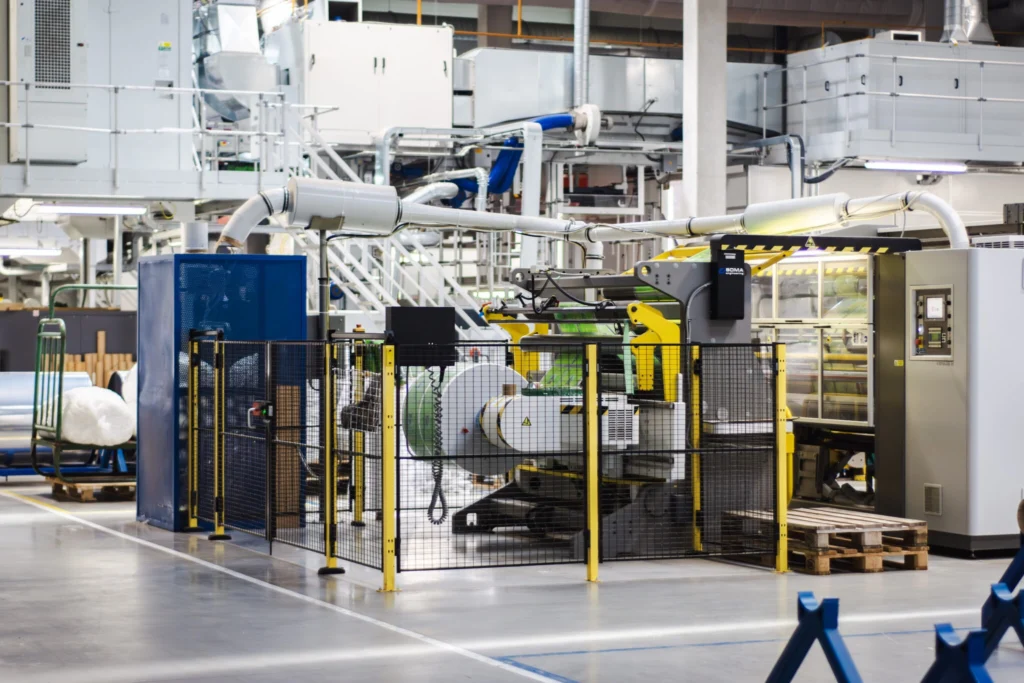
LAMINATED BAGS
LAMIBAG® laminated bags are durable and customizable packaging for dry mixes, substrates, food, feed or chemical products. They use multi-layered LAMITEN® material that combines different types of films to ensure that each layer fulfils its function – from moisture barrier to final appearance.
The bags are available in volumes from 2 to 60 litres, including variants with closures, die-cut or printed. We can respond to specific requirements even in smaller production runs and offer the possibility of storing finished packaging for up to six months.
LAMIBAG® meets all legislative requirements for food contact and is suitable for production, logistics and retail wherever quality and reliable packaging is needed.
Product page here.
